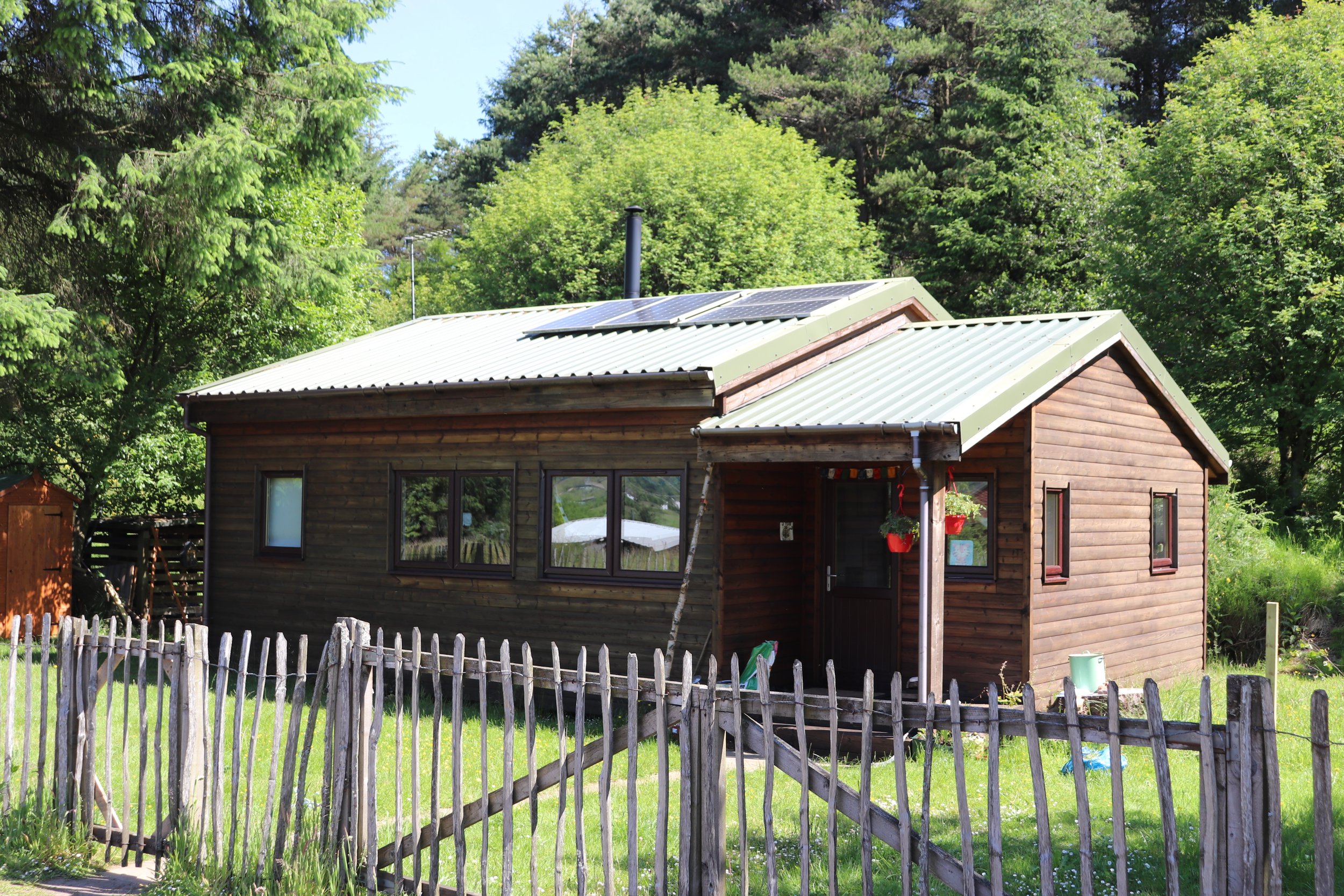Carbeth Hutters.
As you walk from the start of the West Highland Way in Milngavie, you will soon pass Craigallian Loch on your right and then the edge of the Carbeth community and the wooden huts. Beyond this is a community-owned site of 90 acres with some 140 huts in 2022. Huts were first built here after WWI, when returning soldiers and working class people from Glasgow and Clydebank were given camping rights by the landowner.
“It was just a wee path”, Carbeth Hutter Hugh McNicol describing the West Highland Way long before it became the famous walking path.
Carbeth and its wooden huts have been here since 1920, before the concept of the West Highland Way was formed and opened in 1980. As the West Highland Way celebrated forty years in 2020, Carbeth Hutting virtually celebrated its centenary.
Hutter Hospitality.
Hugh McNicol has had his hut for over fifty years and shares it with his family as a weekend and holiday home. He has also extended this hospitality to walkers and even some famous visitors, such as Ali Campbell (UB40) and Christy Moore (Irish folk singer), who played gigs at the former Carbeth Inn,
Hugh “Shug” McNicol talks to Charlotte Joyce about the early days of the West Highland Way and life in the Carbeth Hutter community - as well as some famous visitors.
Hugh chats further with Charlotte about life at Carbeth and managing off grid; the original huts brought up from Clydebank on a horse and cart, solar panels, heating and water, and the garden today.
Craigallian Memorial inscription reads: "Here burned the Craigallian Fire. During the depression of the 1930s, it was a beacon of companionship and hope for young unemployed people who came from Glasgow and Clydebank seeking adventure in Scotland’s wild places. Their pioneering spirit helped to make the Scottish countryside free for all to roam."
A spring Saturday at Carbeth, during 2021, the Carbeth hutters and their families came together to plant fruit trees along the stretch of the West Highland Way that passes through Carbeth. The idea being the hundreds of walkers passing will, one day, be able to pick fruit straight from the trees.
Then and Now.
The origins of the Carbeth community go back to the turn of the 19th century. Landlord Allan Barns-Graham was sympathetic to the ideals of the Clarion movement (which promoted “the clarion call of socialism”) and allowed the Clarion Cyclists to hold an annual summer Fellowship Camp on his land.
After WWI, a group of ex-servicemen wrote to Barns-Graham asking for land on which to build a camping hut. The letter writer was a remarkable man called William Ferris, a pioneer of outdoor access and activities, later Chair of the Scottish Rights of Way Society. Initially camping, then huts followed, the hutters paying a nominal rent - facilities were primitive, and installed at the residents' own expense.
It's also said that Ferris’ friendship with Barns-Graham and shared interests in theatre and the outdoors lay the foundation for the first Right of Way Indication Boards in the West of Scotland. These were financed and unveiled by the landowner and erected by the Federation of Ramblers, which Ferris set up. This shared legacy and established right of way and access allowed Tom Hunter and others to gain support for the creation of the West Highland Way.
In 2022, a brief history of Carbeth and hut map was erected at the intersection of the West Highland Way and the John Muir Way to show visitors something about the rich history of where walkers are just briefly passing by. The two are inextricably linked as walkers flow in from all around the world through Scotland’s best known and largest hutting site.
The Carbeth Hutters Community Company was formed in 2010 after a 14 year rent strike ended with Barns-Graham agreeing to sell the land, at market value, to the hutters. A successful public fundraising campaign was launched allowing a mortgage to be secured at commercial rates to buy the land - Central Scotland’s first ever Community land buyout. So now owning the land, the challenge is to be good custodians of this unique place, to ensure the protection of both the environment, and the ideals of access for ordinary people to a beautiful part of the Scottish landscape.
Carbeth’s low-impact lifestyle is highly-prized and protected. There is no mains electricity or mains water; just standpipes, gas lamps (some of pre-war vintage) and a motley collection of micro-wind turbines and solar panels.






Photos: Jane McGeary. With thanks to Hugh McNicol, Charlotte Joyce and the Carbeth Hutter Community.





